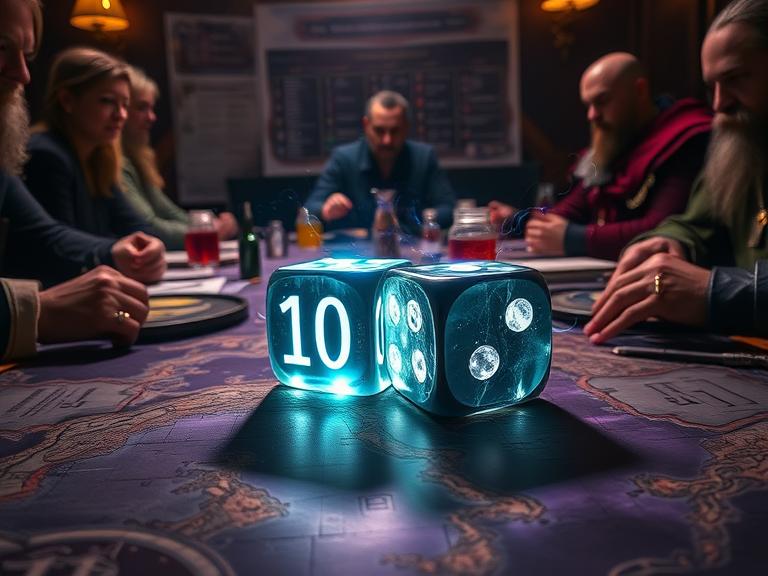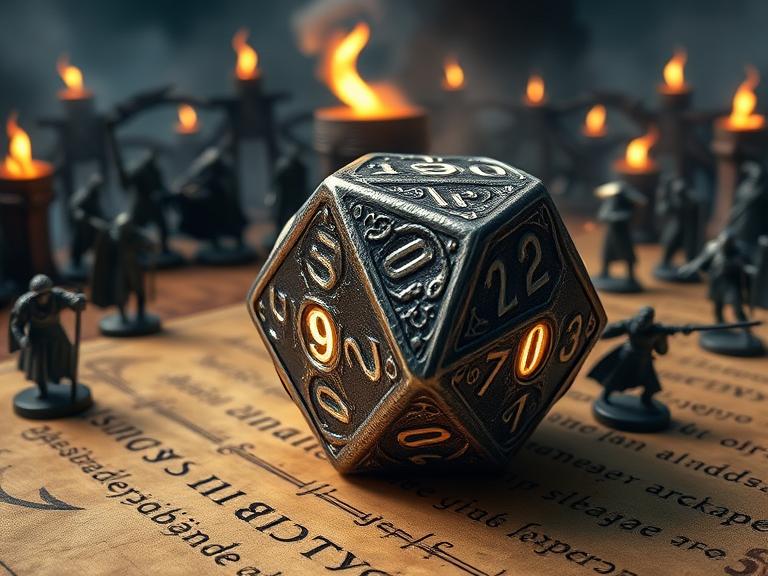Introduction
In the realm of tabletop gaming, dice are more than mere tools; they’re the arbiters of fate, determining the outcomes of battles, decisions, and adventures. Among the various dice used, percentile dice hold a unique place, offering a nuanced approach to probability and randomness. Understanding how to effectively use and interpret percentile dice can significantly enhance your gaming experience.

Understanding Percentile Dice
What Are Percentile Dice?
Dice known as percentile dice, or d100, are for producing a random number spanning 1 to 100. This is typically achieved by rolling two ten-sided dice (d10s): one representing the tens place and the other the units place. The tens die is often marked in multiples of ten (00, 10, 20, …, 90), while the units die is marked from 0 to 9.
History and Evolution
The concept of percentile dice emerged to provide a straightforward method for generating percentages in games. Over time, specialized dice like the Zocchihedron, a 100-sided die, were developed to offer a direct approach to rolling percentages.
Types and Variations of Percentile Dice
Standard Percentile Dice d10 (Tens Die)
The tens die is marked in increments of ten, ranging from 00 to 90. When rolled in conjunction with the unit’s die, it determines the tens digit of the percentile roll.
d10 Units Die
The units die is numbered from 0 to 9 and represents the units digit in a percentile roll. Together with the tens die, it forms a complete percentile result.

d100 Dice (Zocchihedron)
The Zocchihedron is a 100-sided die designed to produce a direct percentile result without the need for combining two dice. While innovative, some players find it less practical due to its shape and rolling behavior.
Online Percentile Dice Rollers
Digital tools and apps have made it easier to simulate percentile rolls, offering convenience and accessibility for players without physical dice.
Reading Percentile Dice Correctly
Combining Tens and Units
To interpret a percentile roll:
Roll both the tens and units dice simultaneously.
- Combine the results to form a two-digit number. For example, a roll of 30 (tens die) and 7 (units die) equals 37.
Special Cases: 00 and 0
For percentile dice, a roll of 00 on the tens die combined with a 0 on the units die signifies 100, rather than zero. This convention ensures that all numbers from 1 to 100 are represented.
Avoiding Common Misinterpretations
It’s crucial to understand that:
- 00 on the tens die does not represent zero but is part of the combination to form numbers like 01 to 09.
- There is no zero in percentile rolls; the range is 1 to 100.
Rolling Percentile Dice in Different Systems
Dungeons & Dragons (D&D)
In D&D 5e, percentile dice are often used for determining outcomes like random treasure or magical effects. Consider this: to pinpoint a particular magic item from a table, a roll using percentile dice could be necessary.
Other RPG Systems
Games like Call of Cthulhu and Warhammer utilize percentile systems extensively, where character skills are rated on a percentage scale, and success is determined by rolling equal to or under the skill percentage.
Online Tools vs. Physical Dice
While physical dice offer a tactile experience, online rollers provide convenience and can be especially useful for remote play or when physical dice aren’t available.
Probability Basics for Gamers
Understanding Dice Probability
Each outcome on a percentile roll has an equal 1% chance of occurring, assuming fair dice. This uniform distribution makes percentile dice ideal for representing equal probability scenarios.
Utilizing Probability in Gameplay
Understanding the probabilities can aid in strategic decision-making. For example, knowing that a particular action has a 70% success rate can influence a player’s choice to attempt it.
6. Using Percentile Dice in Gameplay
Applications in RPGs
Percentile dice serve multiple functions, such as generating random events, deciding the outcomes of skill challenges, and creating treasure drops. Their versatility makes them a staple in many gaming systems.
Mechanics Based on Percentile Systems
In systems where character abilities are rated by percentages, percentile dice provide a direct method for resolving actions, with success determined by rolling under the relevant skill percentage.
Tips and Tricks for Rolling Percentile Dice
Ensuring Accurate Rolls
Use a dice tray or a flat surface to prevent dice from rolling off the table or landing unevenly. Consistent rolling techniques can also help maintain fairness.
Customizing Your Dice Set
Some players prefer to use color-coded dice to distinguish between the tens and units dice easily. Streamlining gameplay and minimizing ambiguity can be achieved through this.
Percentile Dice in Dungeons & Dragons (5e Specific)
Mechanics Overview
In D&D 5e, percentile dice are primarily used for specific tables and effects, such as determining the outcome of a wild magic surge or the specifics of a treasure hoard.
Loot Tables and Magic Items
Percentile rolls are often used to randomly determine items found in treasure hoards, with tables assigning items to specific percentile ranges.
Digital Tools for Percentile Dice Rolling
Online Dice Rollers
Websites like DNDBeyond offer integrated dice rollers that can simulate percentile rolls, providing quick and easy results without physical dice.
Mobile Applications
Various mobile apps are available that simulate dice rolls, allowing players to roll percentile dice on the go.
Percentile Dice for Game Masters (GMs)
Designing Custom Tables
GMs can create custom tables using percentile ranges to introduce unique events, encounters, or items into their campaigns, adding depth and unpredictability.
Balancing Randomness and Narrative
While randomness adds excitement, GMs should balance it with narrative coherence, ensuring that random outcomes still fit within the story’s context.
Conclusion
Mastering the use of percentile dice enhances the gaming experience, offering a blend of chance and strategy. By understanding their mechanics, applications, and probabilities, players and GMs alike can enrich their gameplay, making each roll a thrilling part of the adventure.
